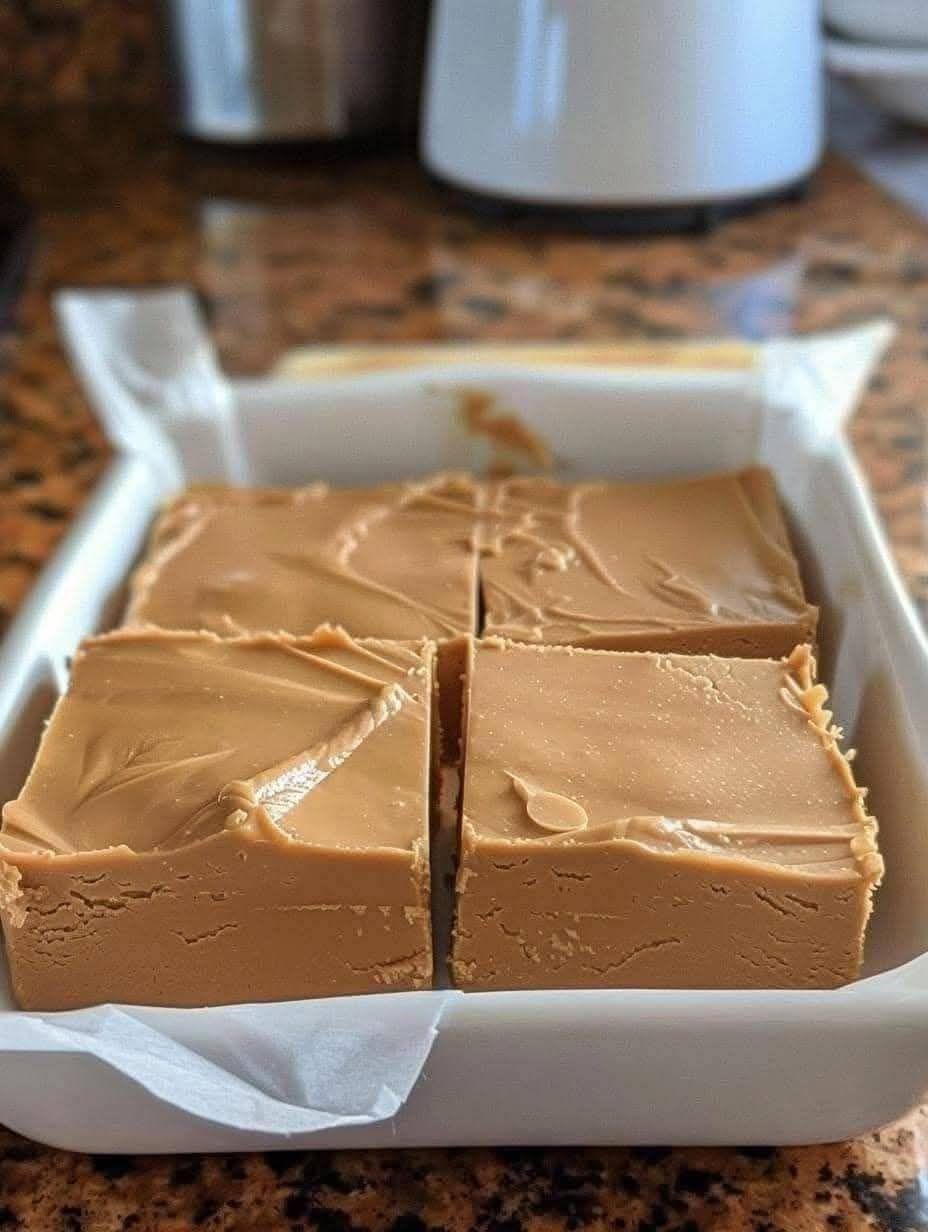1. Boiling the Sugar and Milk
The first method is to combine the sugar and milk in a saucepan and bring it to a rapid boil over medium heat. Stir constantly to ensure that the sugar dissolves evenly and the milk doesn’t scorch. Boil the mixture for exactly 2 1/2 minutes. The key here is precise timing—this ensures that the sugar reaches the right consistency for the fudge to set properly once cooled.
2. Incorporating Peanut Butter and Vanilla
After boiling, remove the pan from the heat to prevent the mixture from overcooking. Stir in the peanut butter and vanilla extract. The peanut butter will melt into the hot sugar mixture, creating a smooth, velvety base for your fudge. Make sure to stir continuously until everything is fully combined and smooth.
3. Pouring and Setting
Once the mixture is well combined, pour it into a greased pan (8×8 inches for a single batch or 11×13 inches for a double batch). Greasing the pan is essential to prevent the fudge from sticking.
Let the fudge cool at room temperature for several hours to set. You can also place it in the refrigerator to speed up the cooling process, but be sure to give it enough time to firm up properly.
4. Cutting and Serving
After the fudge has completely set, cut it into squares using a sharp knife. It’s easier to cut if you let it cool for at least 3–4 hours, or overnight if possible.
Serve immediately or store in an airtight container at room temperature for several days or in the refrigerator for up to a week.
Additional Tips for Perfect Fudge:
Watch the Temperature: Use a candy thermometer to monitor the boiling sugar mixture. The ideal temperature should be around 234°F (112°C). This will help ensure that the fudge sets properly.
Avoid Overheating: Don’t let the sugar and milk mixture boil for too long, as it could result in a grainy texture instead of a smooth, creamy finish.
Double Batch: If you’re making a larger batch, increase the cooking time slightly to ensure everything cooks evenly. Stir more frequently to prevent burning.
By following these methods, you’ll ensure that your peanut butter fudge turns out smooth, creamy, and just the right texture every time
History of Peanut Butter Fudge:
Fudge, as we know it today, originated in the United States during the late 19th century, with the earliest known recipes dating back to the 1880s. Peanut butter fudge became especially popular in the 20th century, when peanut butter itself began gaining widespread use in recipes. The addition of peanut butter to fudge created a creamy, nutty twist that quickly became a favorite, particularly in the Midwest and Southern United States. Today, peanut butter fudge is often associated with homemade candy-making traditions and is a staple during holidays like Christmas and Thanksgiving.
Benefits of Peanut Butter Fudge:
While peanut butter fudge is a rich and indulgent treat, it does offer some nutritional benefits due to the presence of peanut butter. Peanut butter is a good source of protein, healthy fats, and vitamins like Vitamin E and B3 (niacin). However, it’s important to enjoy this treat in moderation, as it is also high in sugar and calories.
Peanut Butter: Provides healthy fats, protein, and essential nutrients.
Sugar and Milk: Offer a quick energy boost, though should be consumed in moderation to maintain balanced nutrition
While peanut butter fudge is primarily a sweet indulgence, it does offer some nutritional benefits due to the ingredients used, particularly peanut butter. Here’s a breakdown of its potential benefits:
Next Page
